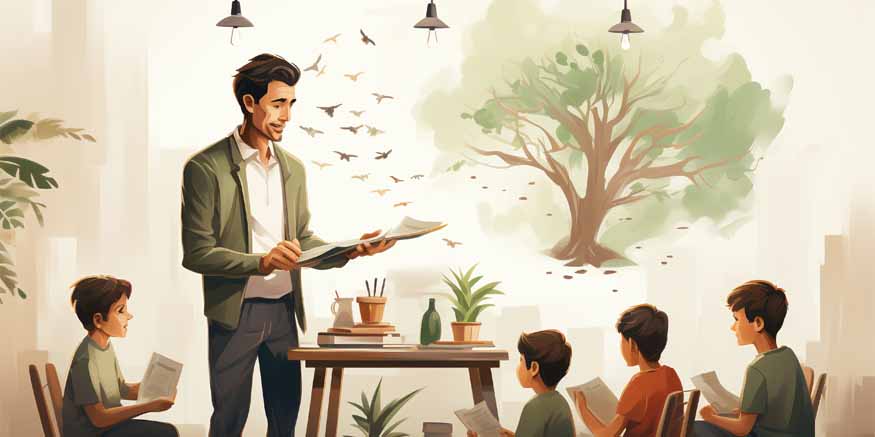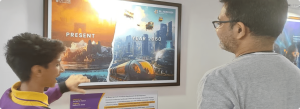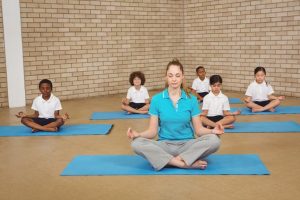Everything About Traditional Teaching Method

The traditional teaching method of India dates back thousands of years and originates from the ancient “Gurukul” system of the Vedic Bharat. In the Gurukul system, the students must leave their homes and stay at their Guru’s place. Unlike that, the traditional teaching takes place within the four walls of a building called “School”. The post-COVID era has seen the rise of ed-tech companies and online courses, yet the schools still largely follow the traditional teaching method. However, there are several radical changes in the classroom, while preserving the traditional model at its core. Today we will discuss the traditional teaching methods and how it has evolved over the years. Read on to know more!
What is the traditional teaching method?
The traditional teaching methods are teacher-centric where the teacher decides everything. He/she is at the ultimate liberty to decide on the proceedings of the class. Lessons are read usually by repeating after the teacher several times. It is usually a blackboard-based class where the teacher uses it to describe various concepts and the students copy the essential notes in their notebooks. It is usually a dictation-based class where the teacher dictates useful notes from the exam point of view. The students copy them in their copies. They are expected to memorize and prepare for exams. Much of the studies that are done are from the point of passing the exams and attempting all the questions. There is little room for “why” and “how” and critical thinking.
Advantages of the Traditional Teaching System
The traditional teaching system mandates conducting offline physical classes which has several advantages. The physical meeting between the teachers and the students helps the teachers assess the student’s uptake of the content based on their facial expressions. This will allow them to re-visit the concept and help clarify the student’s understanding. The classes are well-monitored and disciplined which fosters a good learning environment. A traditional class if well-conducted can ensure healthy competition among the students. This will ensure better academic development of all participants in the class. Interacting with the teachers and fellow batchmates helps the students develop interpersonal skills. All of these ensure the holistic academic development of the students present in the classroom.
Shortcomings of the Traditional Teaching Methods
The biggest shortcoming of the traditional teaching method is that the system defines the boundaries of the class! Every time the teacher dictates the solutions it minimizes the scope for critical thinking. The lack of challenging the student with problems deters the out-of-the-box thinking. Thus, their minds are not trained to innovate but rather to follow what is being directed without much thinking. However, you must not confuse the traditional teaching method as the enemy of critical thinking. It does not mandate the practice! The hard truth is that it depends on the instructor. If he/she encourages critical thinking, then a traditional setting can go well with that.
However, a problem comes when the teacher is not motivated enough to do the teaching. He/she then follows a standard protocol of teaching students by informing them what is written in the textbook. The next major shortcoming of the traditional teaching method is the lack of proper supervision. The teacher is the ultimate boss of the class, and no superior usually oversees his/her functions. Even if they do it is not very stringent.
How the traditional teaching system has changed over the years?
Over the years, it has been realized that the traditional teaching system needed a major revamp. As a result, a couple of radical changes have been brought into the classroom. For example, it is no longer a dictation-based classroom. Students are provided with several thought process questions that stimulate their critical thinking. Instead of regular homework about the lessons that are being taught in the class, the students are given assignments alongside fewer home tasks. These assignments require the student to go through external resources and think of solutions. This thereby ensures learning beyond the textbooks. Nowadays several schools have moved past the blackboards and incorporated smart boards into the classroom. This helps students visualize the contents of the textbook.
Another notable feature that has been abolished in the classroom is the punishment of students by physically hurting them. This is strictly prohibited in modern schools as using the cane to right the child can do more harm than any good! Also, the classrooms are monitored by superior officials of the school. This is done to supervise the teachers and help them better their ways. In recent years, there has been an increased opportunity for parental participation by holding parent-teacher meetings and annual meetings. This is where the parents can discuss the academic progress of their kids one-on-one with the teacher.
Education is a noble profession, and schools are but the temple of enlightenment while the teachers are the high priests of knowledge. The traditional system of education has driven the wheels of our civilization by developing human consciousness to explore the mysteries of nature. Therefore, the traditional methods cannot be simply discarded as backdated. It is the foundation on which the modern education system is being built with the help of technology to incorporate innovation and inclusivity among all students. Speaking of which have you heard about Billabong International High School? There they impart modern education. This they do while cleverly incorporating all the good elements of traditional teaching methods. Contact us today to learn more about them.








